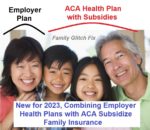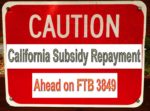There are times when some regions get a huge windfall of subsidies. In Region 9, Valley Health Plan left the region. This dropped the expensive Blue Cross EPO into the SLCSP slot. This resulted in a 57 percent increase of the SLCSP rate in 2025 from Blue Shield HMO that was the SLCSP in 2024.











